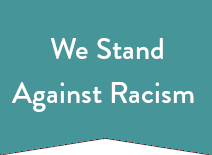
Couples Therapy
How would life be different if you could both get you want?
Is Therapy Right For Us?
Sound like you?
– Can’t Really Talk Without Fighting?
– Live Like Roommates?
– Have Trust Issues?
We want you to leave most sessions feeling better, and closer to each other.
Sometimes couples fear therapy: will it just open up painful or destructive conflict?
Our aim is to show you how to…
– Turn criticisms into requests that can actually be met.
– Interrupt old—often hurtful and repetitive—conversations.
– Identify solutions and set them into motion.
– Transform withdrawal into an authentic, enthusiastic reaching out to your partner.
– Instead of the conflict or distance, let your love and partnership define your relationship.
Wondering how to get your partner to come to therapy?
We invite you to call and talk with one of us about your partner’s hesitation. We can usually find ways to make the benefits of couples therapy tempting to both people.
The Bridge Center Difference
We identify the benefits both of you can gain from the process:
Does one of you feel dragged into counseling by the other? One of our first tasks is to identify how you both can be happier. We want you to walk out of the first session knowing what’s in this for you…
You really can get there from here.
Let’s Do What Works.
We work in two layers.
The first layer is about helping you learn how to talk about the difficult things.
Our therapists focus the therapy on doing the things that authentic, happy couples do to succeed in their relationships, and on recognizing and redirecting the behaviors that unhappy couples need to stop doing. Hot conflict can be turned into an opportunity to grow closer. The downward spiral of cold avoidance can be warmed up and reversed.
We often begin with a few basic skills, like how to say what’s true without evoking defenses, how to actually hear what your partner’s saying, and how to build warmth and safety with small considerate acts.
The second layer is about mending underlying, sometimes very old hurts—and how they’re triggered in a way that derails real communication in the present.
Pockets of pain can create circular conflict and prevent couples from communicating constructively. Facing these obstacles together couples come to know each other in new, deeper ways, and “combatants” or “roommates” can often rather suddenly find themselves in a relationship with a powerful, beloved ally.
You really can get there from here.
- Schedule a session online now.
Questions?
Talk to us.
We can help you.







